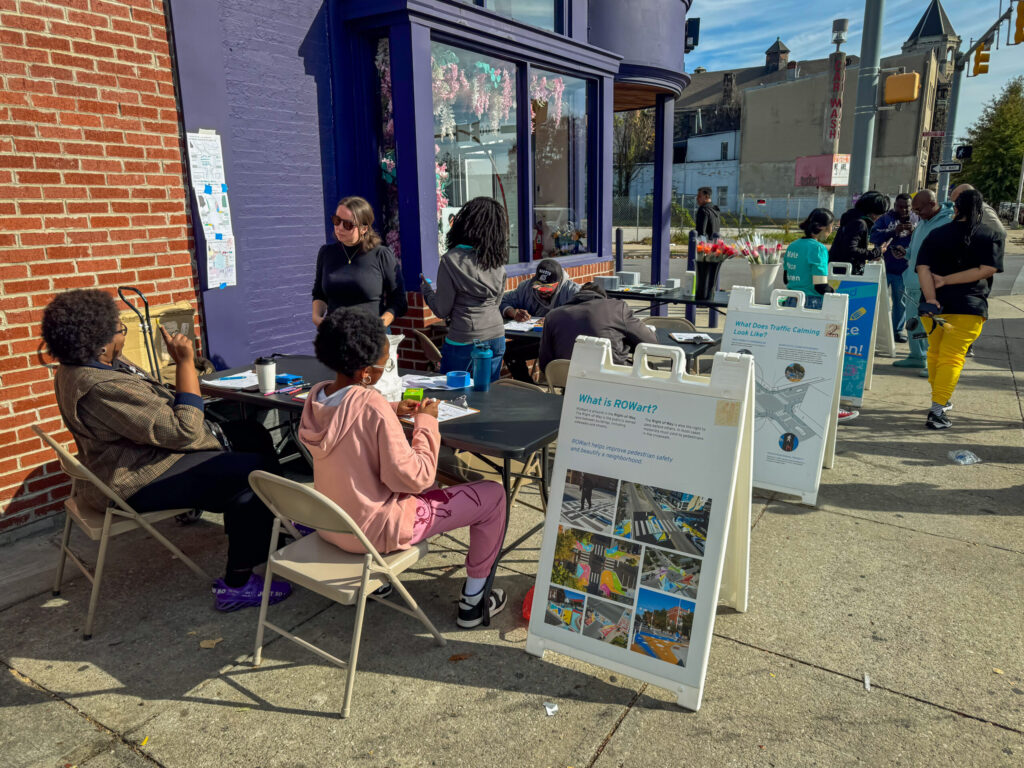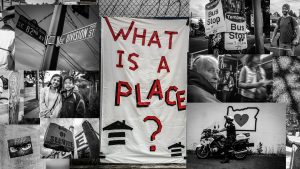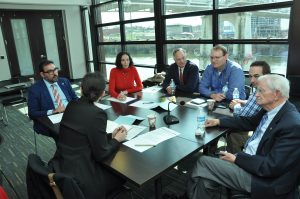
New to the world of creative placemaking? Catch up with our recent work
At T4America, we’ve stepped up our work in the arena of creative placemaking, traveling the country to learn from what others are doing and sharing the experience of our growing staff when it comes to this emerging approach for transportation planning.
National examination of the practice of creative placemaking. Late last month we announced that Transportation for America has been commissioned by ArtPlace America to undertake a rigorous national examination of creative placemaking in transportation to better understand how and where artists, designers, and cultural workers are collaborating with local governments and community partners to solve transportation challenges. T4America was chosen to lead this transportation field scan research and subsequent working group convening because of our “strong institutional commitment to creative placemaking, comprehensive knowledge of the transportation sector and recent commitment to the creation of an arts & culture program with Ben Stone at the helm,” according to Jamie Hand, ArtPlace’s Director of Research Strategies.
Kicking off Portland’s new community creative placemaking grants. Our creative placemaking work also recently took us to Portland, Oregon where our arts & culture team met with key stakeholders and toured the creative placemaking projects we support through a grant from the Kresge Foundation.
In east Portland, the Jade and Midway Districts — led by our partners at APANO — are building public support and awareness to ensure that a new bus rapid transit project best serves the needs of the local community. Our team also presented at the launch of Metro’s new Community Placemaking grants, which have been inspired by the implementation of the APANO’s Jade-Midway District Arts Plan.
A creative city going deeper with a creative approach to engaging the public. The Nashville Area Metropolitan Planning Organization (MPO) is deepening its commitment to engaging the community in creative ways, and integrating artists into community development and transportation projects. The Nashville Area MPO recently launched its creative placemaking efforts with the adoption of its most recent regional transportation plan and has a long-term goal of emboldening and equipping their members to facilitate more valuable public engagement and further community outreach in local planning efforts.
In March, the Nashville MPO convened their first Creative Placemaking Symposium, bringing together area elected officials, transportation planners and engineers from local and state governments to learn how and why creative placemaking works. Rochelle Carpenter, T4A Program Manager and Nashville MPO Senior Policy Analyst, was a key organizer for the symposium, and brought in our Director of Arts & Culture, Ben Stone, to share his insights on how to build effect creative placemaking projects.
How are artists and municipal officials learning to work together? The integration of arts and culture as new tools to help solve civic challenges is an exciting new development in the field. We’ve seen these tools better involve community members, and help to create places that are more meaningful to and reflective of the people that live, work and play there. The artists and cultural workers bridging the conversation between local communities and civic/transportation professionals are now serving an important role as co-problem solvers. But how are the municipal officials and artists being equipped and trained to work together and build these valuable partnerships?
Hear more by catching up with the recording of our most recent webinar on creative placemaking, Training for Artists and Civic/Transportation Collaboration, where we learned about these programs from the perspective of a national practitioner, local training organizer, and an alumna of a training program who also happens to be one of our newest staff members, Mallory Nezam.
Through this webinar we learned how these practitioners are being equipped to work in multiple sectors, communicate with diverse stakeholders, and harmonize the goals of different players. These programs train artists in both practical skills — like writing contracts — and community organizing skills–like how to work with diverse populations. As a result, these training programs are preparing artists to think outside of their traditional role and work with local communities, civic professionals, and local governments. When artists understand the benefits they can bring to the civic sector, we are able to work together to create thriving places that work for everyone.
Lastly, if you haven’t yet, please do check out our guide to creative placemaking, The Scenic Route, intended for a lay audience of elected officials, planners, or other local leaders.





